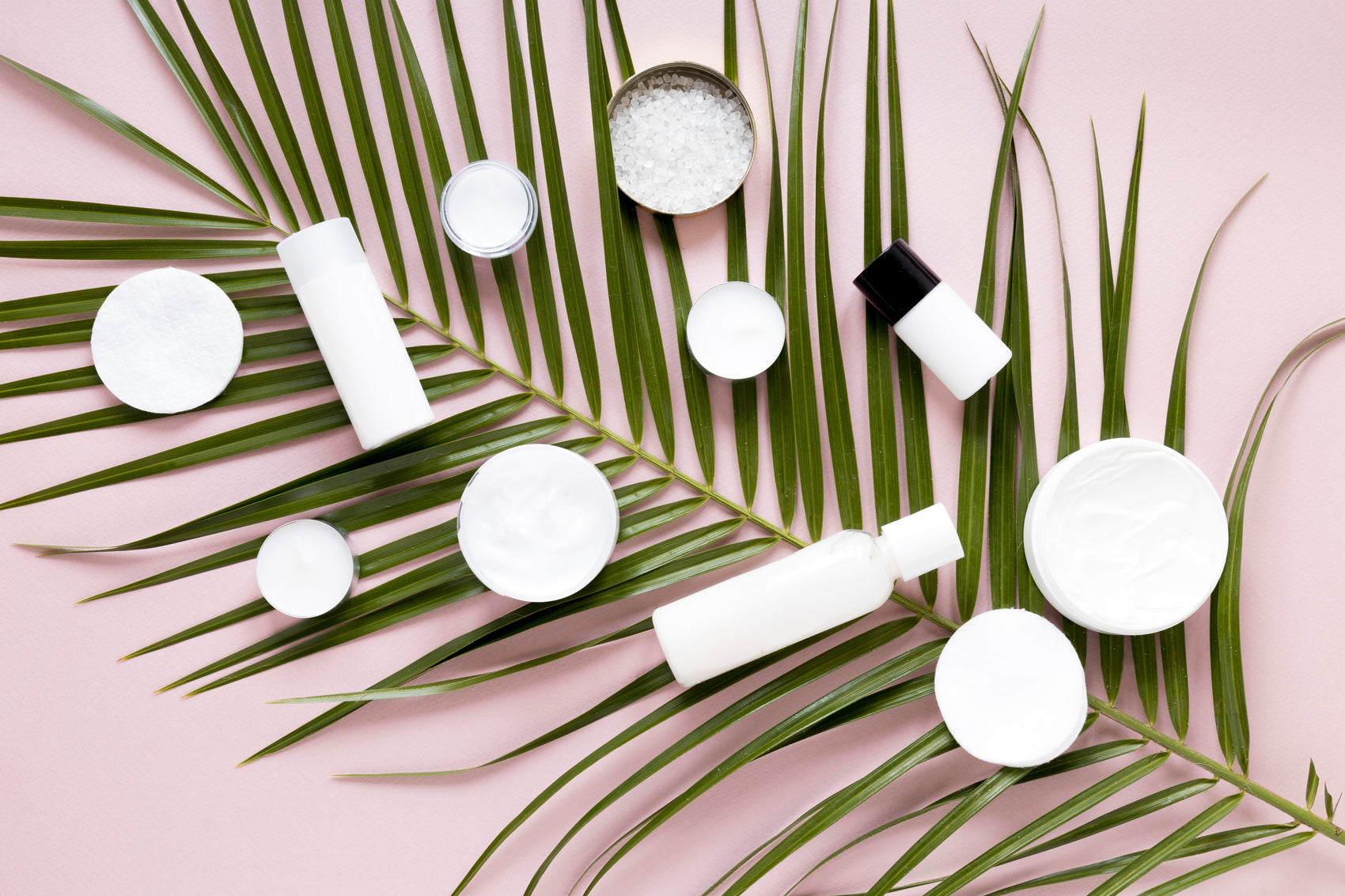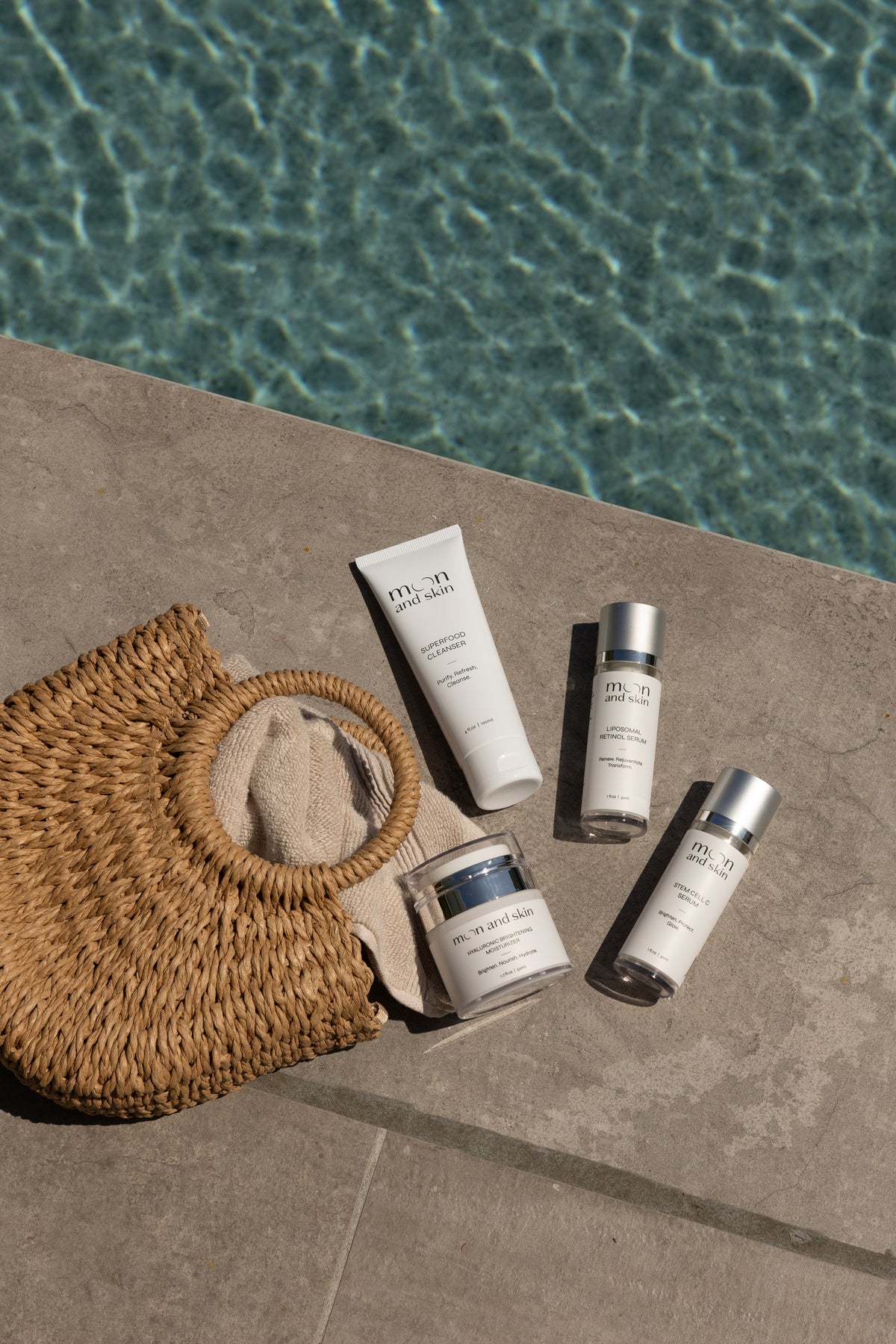Table of Contents
Introduction
Did you know that your skin can lose up to 25% of its moisture in a single day? This staggering statistic highlights the importance of understanding how hydration works and why incorporating hydrating ingredients into our skincare routines is crucial. As we navigate the vast world of skincare, we often come across terms like 'hydration' and 'moisture.' But what do they really mean, and how can we ensure our skin receives the hydration it craves?
At Moon and Skin, we understand that every individual's skincare journey is unique. Our mission is to provide clean and thoughtful skincare for every phase of life, empowering our community with the knowledge they need to achieve radiant, healthy skin. In this blog post, we'll explore the essential hydrating ingredients for the skin, their benefits, and how to integrate them into your skincare routine. Together, we'll unlock the secrets to achieving that coveted dewy glow!
Understanding Hydration vs. Moisture
To kick things off, let’s clarify the difference between hydration and moisture. While these terms are often used interchangeably, they refer to distinct aspects of skin health.
- Hydration refers to the water content in the skin. When we talk about hydrating ingredients, we're focusing on those that help attract and retain water in the skin.
- Moisture, on the other hand, pertains to the oil content of the skin. Moisturizing ingredients create a barrier that helps prevent water loss from the skin.
In simple terms, think of hydration as filling a bucket with water, while moisture is about sealing that bucket to keep the water from spilling out. Both elements are crucial for maintaining healthy, balanced skin.
The Importance of Hydration
Why is hydration so vital? Well, when our skin is adequately hydrated, it appears plump, smooth, and youthful. However, factors like environmental stressors, harsh weather, and aging can deplete our skin’s moisture levels, leading to dryness, dullness, and even premature aging.
By incorporating hydrating ingredients into our skincare regimen, we can restore that essential water balance and keep our skin looking its best. For those of us navigating the ups and downs of life, having a solid understanding of hydrating ingredients can be a game-changer.
Our Focus: The Star Ingredient
In this blog post, we’ll be placing a special emphasis on Hyaluronic Acid, a superstar when it comes to hydration. It’s renowned for its ability to hold up to 1,000 times its weight in water, making it an unparalleled humectant. This means it draws moisture from the environment into the skin, ensuring it stays adequately hydrated.
Alongside Hyaluronic Acid, we will also explore other hydrating ingredients and how they can complement our skincare routine. So, let’s dive into the world of hydrating ingredients!
Key Hydrating Ingredients for Skin
1. Hyaluronic Acid
As we mentioned earlier, Hyaluronic Acid is a powerhouse humectant that attracts moisture to the skin. Here's what you need to know:
- Benefits: Hyaluronic Acid helps to plump the skin, reduce the appearance of fine lines and wrinkles, and improve overall skin texture. It’s suitable for all skin types, including sensitive and acne-prone skin.
- How to Use: Look for serums or moisturizers that contain Hyaluronic Acid as a key ingredient. Our Stem Cell C Serum includes this hydrating superstar, providing additional benefits like brightening and protection.
2. Glycerin
Glycerin is another well-known humectant that draws moisture to the skin. It’s often found in various skincare products due to its effectiveness.
- Benefits: Glycerin helps to maintain skin hydration, improve elasticity, and soothe dry skin. It’s gentle and works well for all skin types.
- How to Use: Look for products that list Glycerin among their top ingredients. Combining it with an occlusive agent will enhance its hydrating effects.
3. Aloe Vera
Aloe Vera is not just a soothing plant; it’s also a fantastic hydrating ingredient.
- Benefits: Known for its anti-inflammatory properties, Aloe Vera hydrates and calms the skin, making it ideal for sunburns or irritation.
- How to Use: You can use pure Aloe Vera gel or look for moisturizers that incorporate this ingredient for a calming touch.
4. Squalane
Squalane is derived from Squalene, which is naturally produced by our skin. It mimics the skin’s natural oils, making it an excellent emollient.
- Benefits: Squalane provides lasting hydration, improves skin barrier function, and helps reduce the appearance of fine lines.
- How to Use: Incorporate Squalane oils or creams into your routine, especially if you have dry or combination skin.
5. Ceramides
Ceramides are lipids that help to restore the skin barrier and retain moisture.
- Benefits: They lock in hydration, improve skin texture, and protect against environmental stressors.
- How to Use: Look for moisturizers that contain Ceramides, particularly if you have dry or sensitive skin.
6. Lactic Acid
While primarily known as an exfoliant, Lactic Acid is also a humectant.
- Benefits: It helps to remove dead skin cells while hydrating the skin, resulting in a smoother and more radiant complexion.
- How to Use: Use Lactic Acid-based products in your routine, but be cautious if you have sensitive skin, as it can cause irritation.
7. Urea
Urea is a powerful hydrator that also acts as an exfoliant.
- Benefits: It helps to soften the skin and increase moisture levels, making it beneficial for conditions like dry skin and keratosis pilaris.
- How to Use: Urea can be found in many body lotions and creams, especially those formulated for very dry skin.
Combining Hydrating Ingredients for Best Results
To maximize the benefits of hydrating ingredients, it’s essential to combine them effectively within your skincare routine. Here’s how to do it:
- Cleanse: Start with a gentle cleanser like our Superfood Cleanser to remove impurities without stripping the skin of its natural oils.
- Hydrate: Apply a serum containing Hyaluronic Acid or Glycerin to draw moisture into the skin.
- Moisturize: Follow up with a moisturizer that contains emollients like Squalane or Ceramides to lock in hydration.
- Seal: For extra hydration, consider using an occlusive product, especially in dry climates or during winter months.
- Daily Maintenance: Remember to apply your hydrating products both morning and evening for optimal results.
Why Skincare Routine Matters
Creating a skincare routine that emphasizes hydration is essential for maintaining healthy skin. Here are some key points to consider:
- Skin Type: Understanding your skin type (dry, oily, combination, sensitive) is crucial when selecting hydrating products. For instance, those with oily skin may prefer lighter, gel-based hydrators, while those with dry skin may benefit from richer creams.
- Seasonal Changes: Your skin's hydration needs can change with the seasons. In summer, lightweight formulas may suffice, while winter may require richer, more occlusive products.
- Consistency is Key: Consistency is vital for achieving and maintaining hydrated, healthy skin. Stick to your routine and adjust as needed based on your skin's response.
Conclusion
Incorporating hydrating ingredients into our skincare routines is a powerful way to maintain a healthy, glowing complexion. By understanding the differences between hydration and moisture, and knowing which ingredients to look for, we can empower ourselves to make informed decisions for our skin.
Our Hyaluronic Brightening Moisturizer is a perfect addition to your routine, providing deep hydration while brightening the skin. If you’re looking to build a complete skincare routine, consider our Bundle & Save collection, which includes all our core products for maximum benefit.
Remember, your skin deserves the best care at every phase of life, and we’re here to support you on that journey.
FAQ
What are the best hydrating ingredients for dry skin?
Some of the best hydrating ingredients for dry skin include Hyaluronic Acid, Glycerin, Aloe Vera, and Squalane.
Can I use hydrating ingredients if I have oily skin?
Yes! Oily skin can benefit from hydrating ingredients too. Look for lightweight, non-comedogenic products that incorporate humectants.
How often should I use hydrating products?
For best results, apply hydrating products daily—both morning and evening. Adjust based on your skin’s needs and seasonal changes.
Is it necessary to use both hydrating and moisturizing products?
Yes, using both is essential for maintaining healthy skin. Hydrating products draw water into the skin, while moisturizing products help seal that hydration in.
Can I mix different hydrating ingredients in my routine?
Absolutely! Mixing different hydrating ingredients can enhance their benefits. Just be mindful of how your skin reacts to new combinations.







